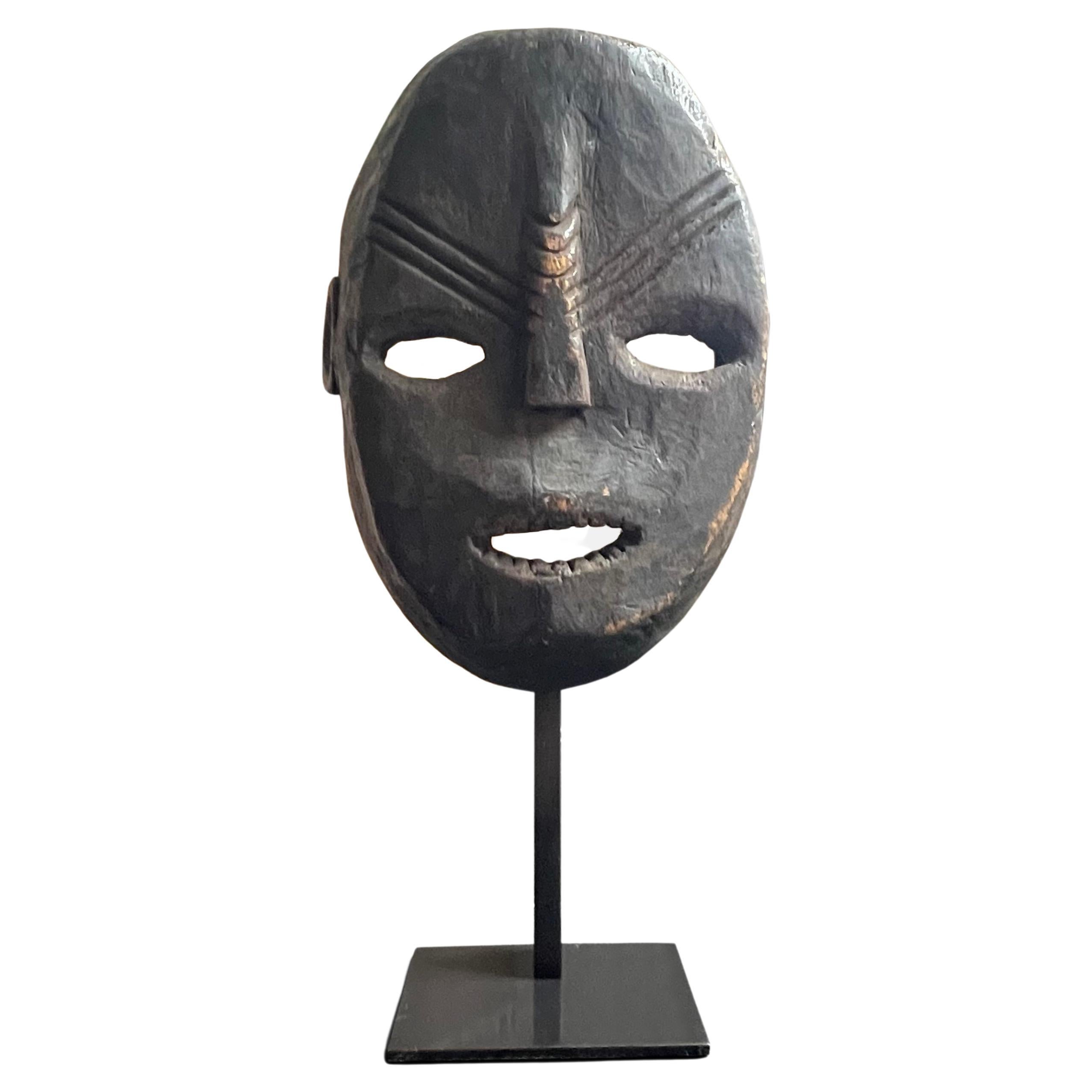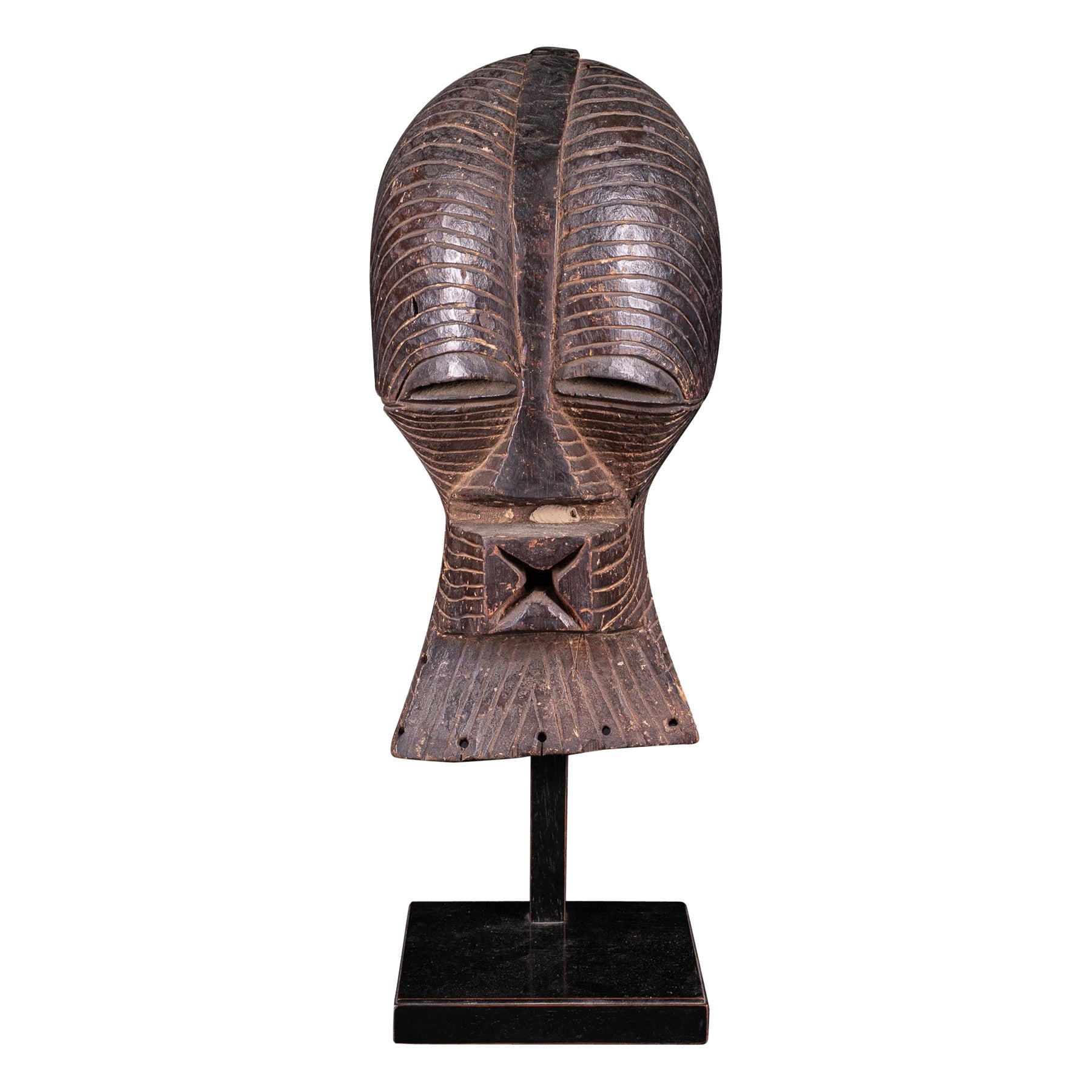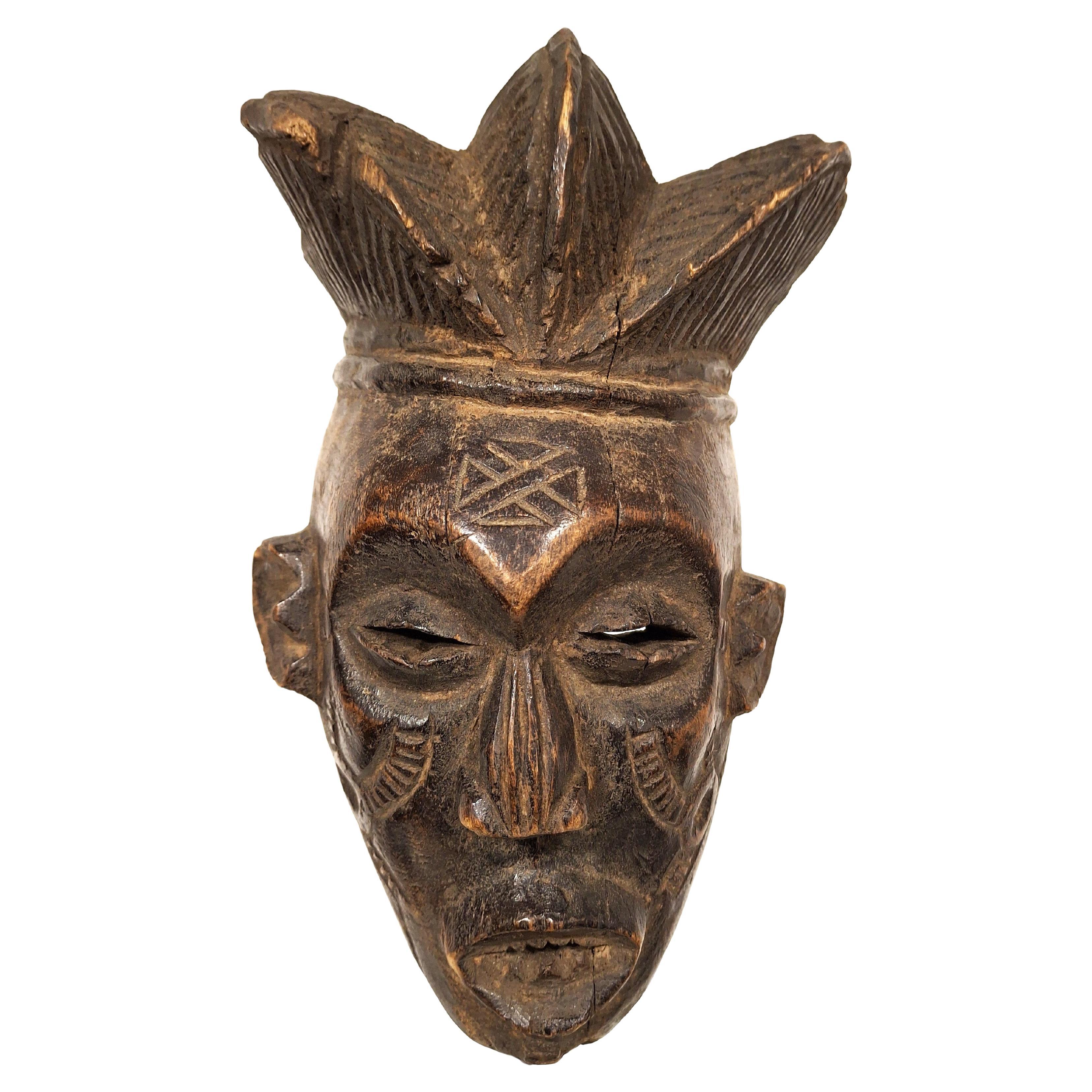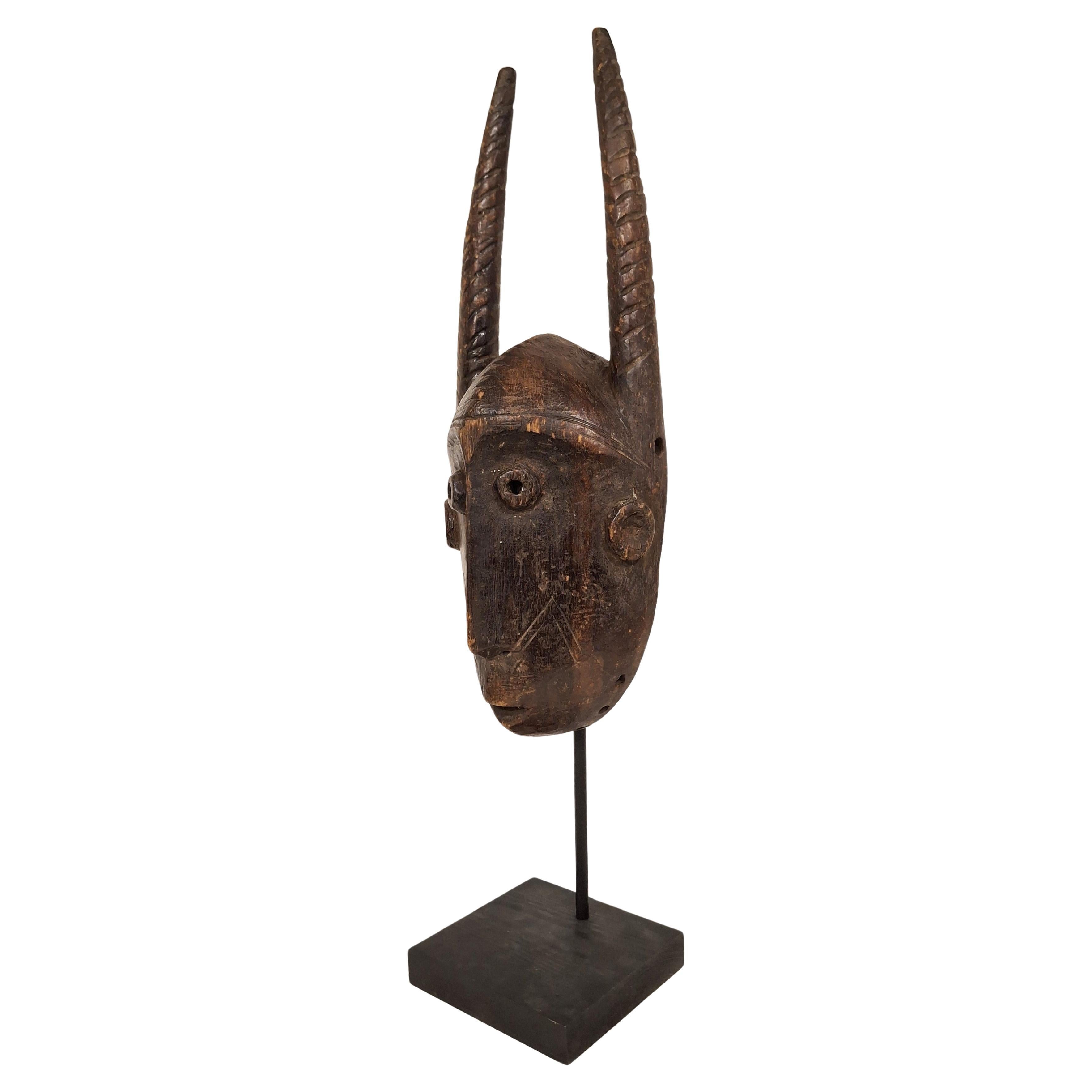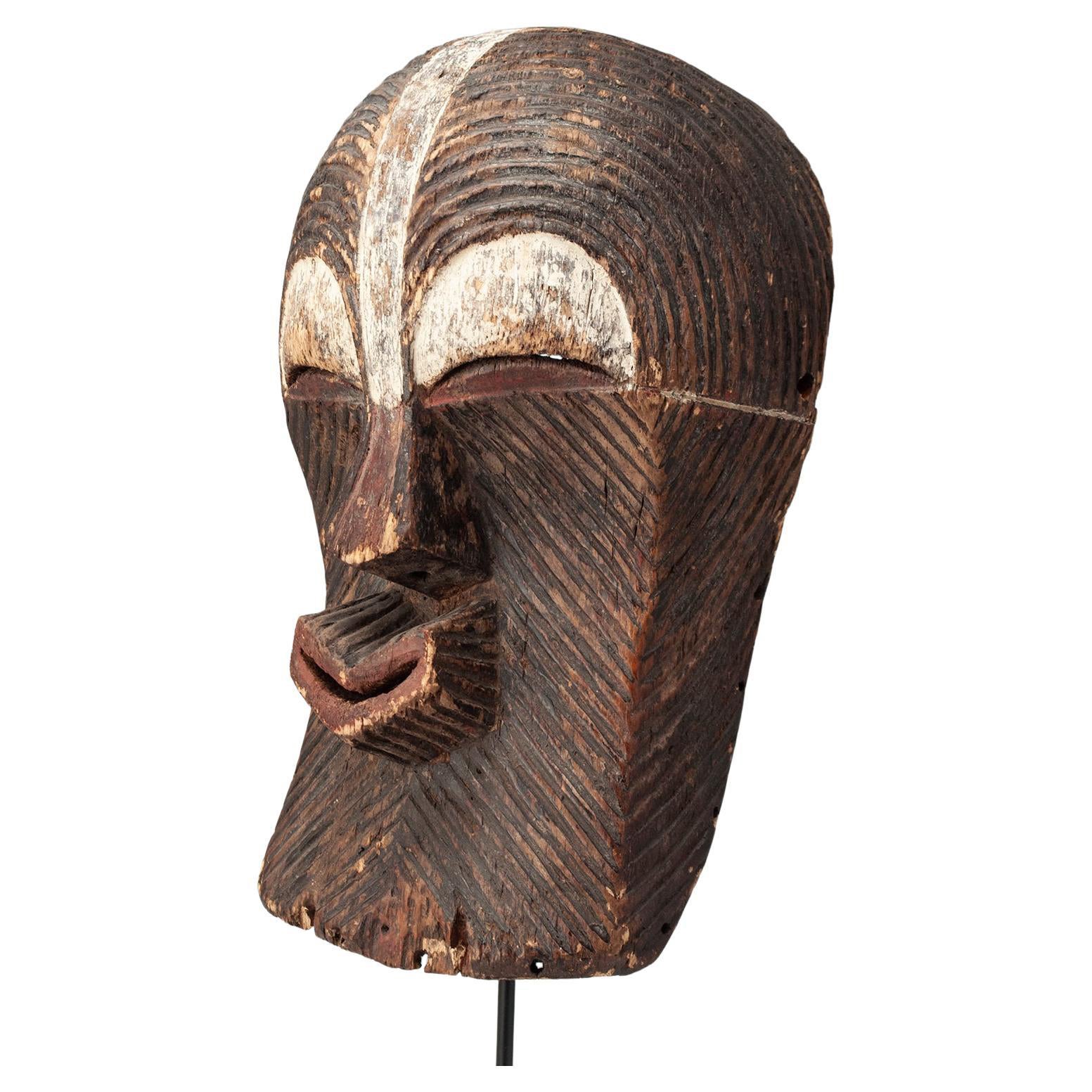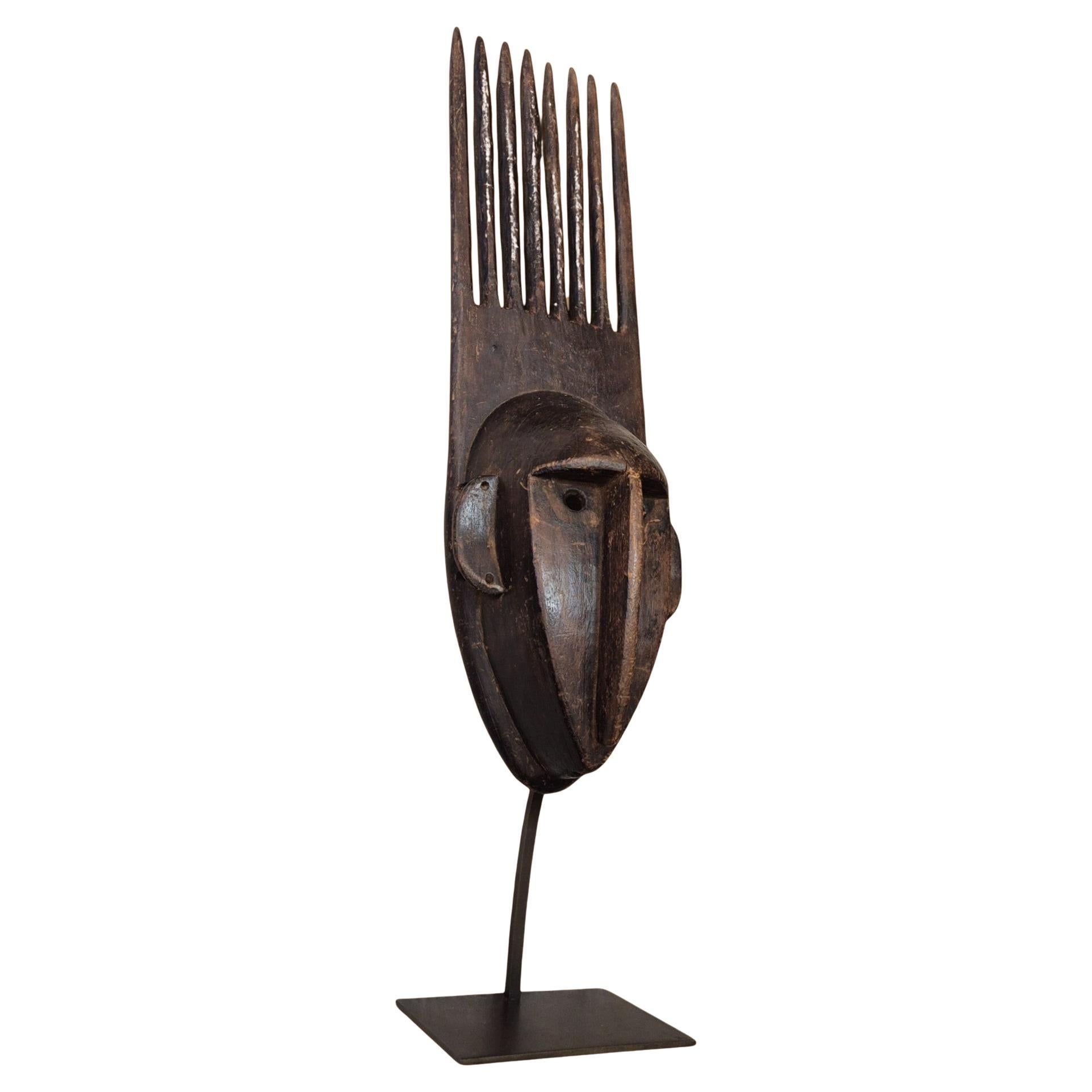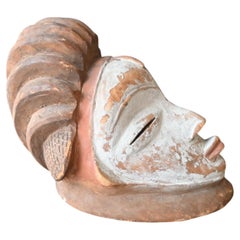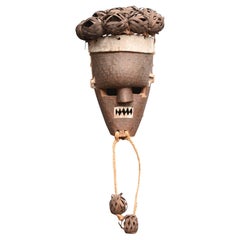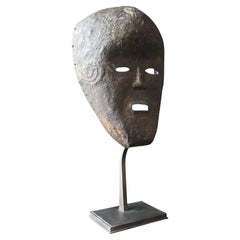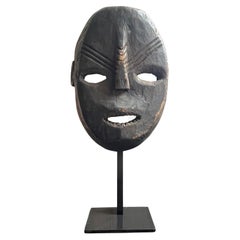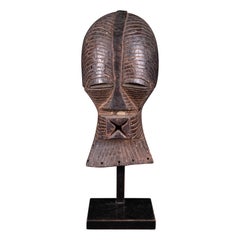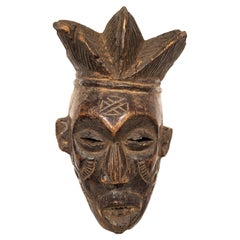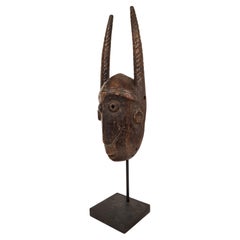Items Similar to Mwana Pwo Mask From The Chokwe / Tshokwe Tribe, Dr Congo
Video Loading
Want more images or videos?
Request additional images or videos from the seller
1 of 10
Mwana Pwo Mask From The Chokwe / Tshokwe Tribe, Dr Congo
$2,995.36
£2,229.44
€2,500
CA$4,102.89
A$4,563.31
CHF 2,382.82
MX$55,530.66
NOK 30,432.25
SEK 28,540.08
DKK 19,031.63
Shipping
Retrieving quote...The 1stDibs Promise:
Authenticity Guarantee,
Money-Back Guarantee,
24-Hour Cancellation
About the Item
A serene-looking Mwana Pwo chokwe mask mounted on a custom-made base which is included
Early 20th century
The Mwana Pwo mask was the personification of the ideal woman among the Chokwe
Patina of tribal use
Mask height 21 cm, total height with base 30.5 cm
- Dimensions:Height: 12.01 in (30.5 cm)Width: 5.52 in (14 cm)Depth: 4.73 in (12 cm)
- Style:Tribal (Of the Period)
- Materials and Techniques:
- Place of Origin:
- Period:
- Date of Manufacture:20th century
- Condition:Wear consistent with age and use. normal age traces.
- Seller Location:Bilzen, BE
- Reference Number:1stDibs: LU10361244505332
About the Seller
New to 1stDibs
Joined in the past six months.
5.0
Gold Seller
Premium sellers maintaining a 4.3+ rating and 24-hour response times
Established in 1987
1stDibs seller since 2025
7 sales on 1stDibs
Typical response time: <1 hour
- ShippingRetrieving quote...Shipping from: Bilzen, Belgium
- Return Policy
Authenticity Guarantee
In the unlikely event there’s an issue with an item’s authenticity, contact us within 1 year for a full refund. DetailsMoney-Back Guarantee
If your item is not as described, is damaged in transit, or does not arrive, contact us within 7 days for a full refund. Details24-Hour Cancellation
You have a 24-hour grace period in which to reconsider your purchase, with no questions asked.Vetted Professional Sellers
Our world-class sellers must adhere to strict standards for service and quality, maintaining the integrity of our listings.Price-Match Guarantee
If you find that a seller listed the same item for a lower price elsewhere, we’ll match it.Trusted Global Delivery
Our best-in-class carrier network provides specialized shipping options worldwide, including custom delivery.More From This Seller
View AllGenuine wooden mask from the Punu tribe, Gabon , first half 20th century
Located in Bilzen, BE
The Punu or Bapunu, are a Bantu meta-ethnicity of Central Africa, mainly in Gabon and a small population in Republic of Congo They are one of the four major people of Gabon, inhabiti...
Category
Early 20th Century Tribal Tribal Art
Materials
Wood
Mukinka Mask from the Salampasu tribe, DR Congo, middle 20th century
Located in Bilzen, BE
A wooden mask from the Salampasu tribe called Mukinka.
The mask is covered with copper pieces from 1 x 2 cm and has a beard in vegetal fiber, the top of the head is also covered with...
Category
Mid-20th Century Congolese Tribal Tribal Art
Materials
Copper
Genuine copper mask from the Dinga / Ding tribe DR Congo, early 1900
Located in Bilzen, BE
A genuine mask hammered in copper from the Dinga / Ding tribe from the south of DR Congo
Early 1900, but probably older
This kind of anthropomorphic masks are called "ngongo munene"...
Category
Vintage 1910s Congolese Tribal Tribal Art
Materials
Copper
Dan Mask With Metal Teeth – Ivory Coast / Liberia, Mid-20th Century
Located in Bilzen, BE
Dan Mask with Inset Metal Teeth – Côte d'Ivoire / Liberia
Mid–20th Century or Earlier
Wood, Metal Inlay
Height:22 cm, width 13 cm
Provenance: Private Collection, Europe
This strikin...
Category
Mid-20th Century Ivorian Tribal Tribal Art
Materials
Metal
African Bird Mask From The Dan Tribe, Ivory Coast, early 1900
Located in Bilzen, BE
Ancient African mask from the Dan Tribe (Ivory Coast, Africa).
Beautiful patina inside and out, in good condition with traces of tribal use.
Ex. French private collection.
Ex. Dutch...
Category
Early 20th Century Ivorian Tribal Tribal Art
Materials
Wood
Sepik River (Keram Region), Papua New Guinea Ancestral Bust, mid 20th century
Located in Bilzen, BE
Sepik River (Keram River tributary), Papua New Guinea
Ancestral Bust (Male Ancestor Figure)
Wood, with age cracks and dark matte patina
Height: 24 cm, base diameter 10.5 cm
Period: M...
Category
Mid-20th Century Papua New Guinean Tribal Tribal Art
Materials
Wood
You May Also Like
Ngbaka Congolese Tribal Mask for Initiation Rituals, Early 20th Century
Located in CA, CA
With a beautiful dark patina, this early 20th century wooden mask shows a naturalistic human face, flattened, with the forehead, open mouth and stylised teeth in light relief; the ri...
Category
Early 20th Century Congolese Tribal Tribal Art
Materials
Wood
Female Kifwebe Mask with old collection label, Luba-Songye People, DR Congo
Located in Leuven , BE
Traditionally, Kifwebe masks were created and worn by members of the secret masking society, Bwadi Bwa Kifwebe, of the Luba and the Songye People living in the central part of the Co...
Category
20th Century Congolese Tribal Art
Materials
Wood
Chokwe Mask – Mid 20th Century – Angola – African Tribal Art
Located in Ljubljana, SI
Bring home a piece of ancestral heritage with this authentic Chokwe mask from Angola, crafted in the mid-20th century. Rooted in deep cultural tradition, Chokwe masks were once used ...
Category
Vintage 1950s Angolan Tribal Masks
Materials
Hardwood
African Katanda Mask – Lega Tribe, DR Congo – Mid 20th Century
Located in Ljubljana, SI
Bring a piece of African heritage into your space with this authentic vintage Katanda mask from the Lega people of DR Congo. Hand-carved in the mid-20th century, this tribal mask is ...
Category
Vintage 1950s Congolese Tribal Masks
Materials
Hardwood
Tribal Style Songye Kifwebe Mask, D. R. Congo
Located in Point Richmond, CA
This graphic Songye Kifwebe mask has fine carved lines curved over the eyes and diagonal lines radiating from the nose and mouth in classic Kifwebe form. ...
Category
Late 20th Century Congolese Tribal Masks
Materials
Wood
Bamana N'tomo mask, Mali, 20th century
Located in NICE, FR
Bamana N'tomo mask, Mali, 20th century
"Generally surmounted by three to eight horns forming a comb, the N'tomoface mask refers to a moment of compulsory education given to uncircumcised young boys in certain West African societies. The mask's discreet, even absent, mouth emphasizes the behavior expected of them in their future adult life after training: controlling and measuring their words, knowing how to keep quiet, preserving secrets and enduring pain in silence."
Excerpt from Masques du N'tomo, Marc Ladreit de Lacharrière Collection, Musée du Quai Branly Jacques Chirac, France.
The Bambara, or Bamana, live in central and southern Mali. Their name means “unbeliever” and was given to them by the Muslims. Animists, they believe in the existence of a creator god called Ngala, who maintains the order of the universe and coexists with another androgynous god called Faro, master of the Word, who gave all qualities to mankind and makes the fruits of the earth grow. Traditional Bamana art objects are closely linked to agrarian rites.
The Bamana dance these masks during initiation and circumcision ceremonies for young boys in the Ntomo society. The face, with its vertical outgrowths at the top, adopts geometric features beneath a rounded forehead, including an imposing busted nose, as the Bamana favor this organ in their statuary as it evokes sociability and clan cohesion. Indeed, during choreography, the dancer frequently touches the nose of the mask.
As teaching aids for candidates, masks from societies accessible to young boys and adults, such as the N'tomo, Korè and Ci wara...
Category
Vintage 1930s Malian Tribal Tribal Art
Materials
Wood
